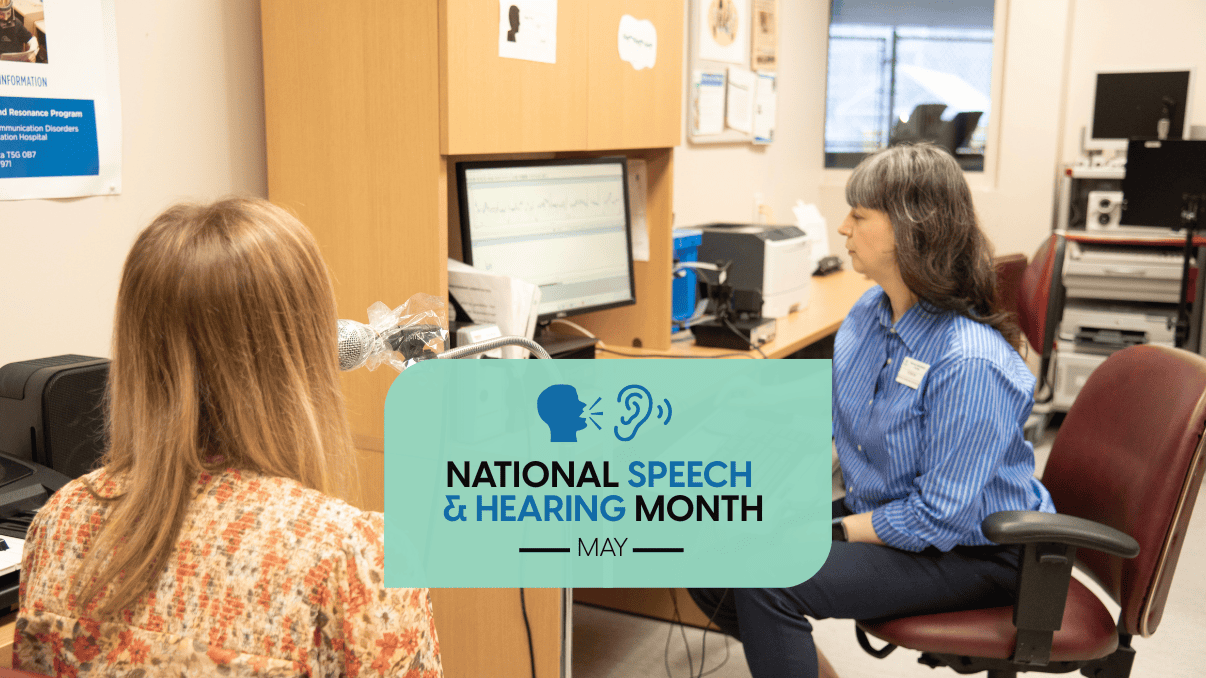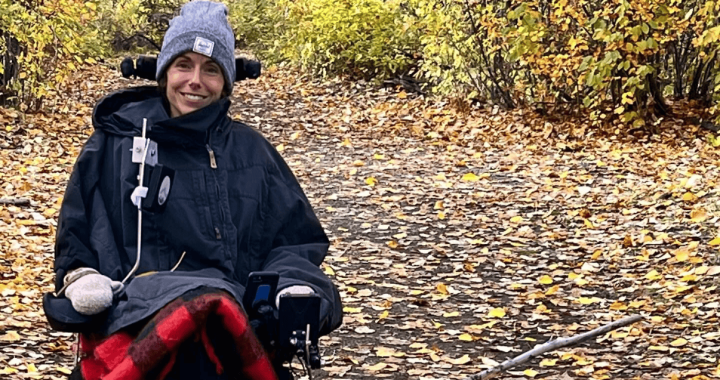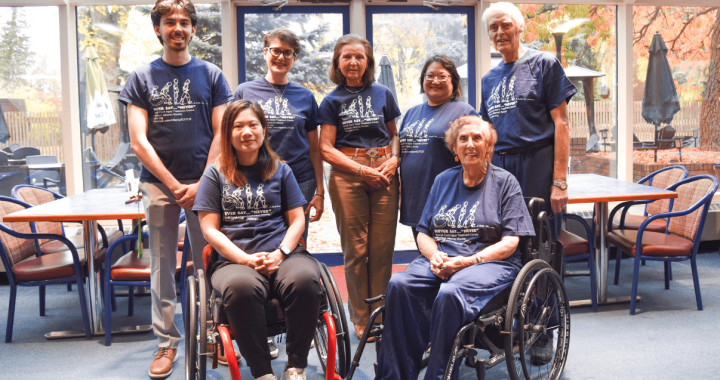May is National Speech-Language-Hearing Month—a time to raise awareness about communication and hearing challenges and recognize the essential role that speech-language pathologists (SLPs) and audiologists play in rehabilitation healthcare.
At the Glenrose Rehabilitation Hospital, we’re proud to celebrate this month by honouring the many wonderful SLPs and audiologists who support individuals of all ages with speech, language, feeding, swallowing, and hearing challenges.
Theresa Hardy, an SLP at the Glenrose, shares how her work actively supports patients and families in navigating these challenges, helping build confidence and independence.
“SLPs at Glenrose do a variety of work,” says Theresa. “We assess and treat issues related to communication, feeding, and swallowing across all age groups. We also help with technology-assisted communication, voice changes for gender alignment, recovery after a stroke or brain injury, speaking post-cochlear implant, and improving social communication for those with neurodiversity.”
The Glenrose is home to both a speech-language pathology and audiology department, offering specialized programs and technologies to support voice and audiology needs.
Whether assessing voice and resonance, hearing impairments or other conditions, technology empowers clinicians with advanced tools to deliver precise, personalized care. At the foundation—and with the support of our generous donors—we’re proud to partner with the hospital to support vital technologies, including the Visi-Pitch, Nasometer, and portable audiometers.
Visi-Pitch
Visi-Pitch is an advanced system used to capture acoustic measurements of a patient’s voice. By analyzing key vocal characteristics such as pitch (frequency), loudness (intensity), and voice quality (stability and regularity), this tool helps SLPs assess voice issues with incredible accuracy.
During an assessment, the SLP records the patient’s voice while either speaking, sustaining a vowel sound, or gliding through various pitches. These recordings are then processed by Visi-Pitch to identify any potential patterns or areas of concern.
This system is vital to voice therapy, enabling SLPs to evaluate voice conditions, support individuals wishing to modify their voice, and allow patients to visually track their progress throughout their treatment.
Nasometer
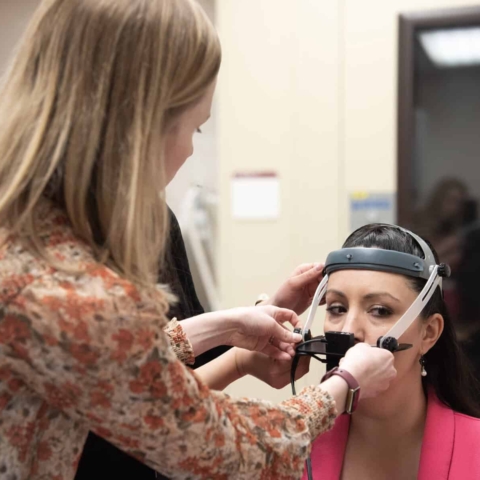 The Nasometer is an essential tool used in the Resonance Program to assess how much sound travels through the nose versus the mouth during speech.
The Nasometer is an essential tool used in the Resonance Program to assess how much sound travels through the nose versus the mouth during speech.
Patients wear a headset with a metal plate and two microphones that capture nasal and oral sound during speech. This device calculates the balance of sound, providing valuable data for both assessment and therapy.
This tool helps patients, especially children, visualize their progress as they work to improve their speech resonance.
Portable Audiometers
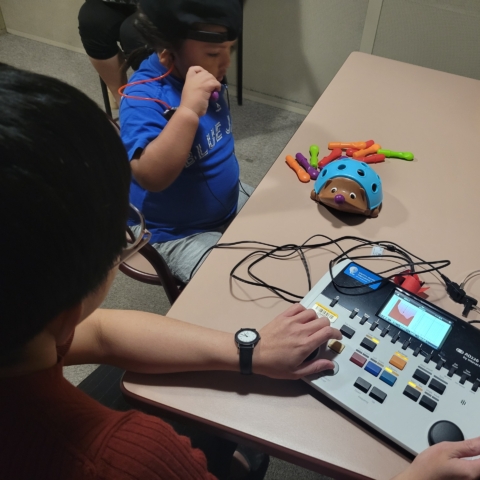
Portable audiometers are changing the way hearing tests are done—especially for children. Instead of relying on traditional sound booths, which can feel small and intimidating, audiologists can now conduct basic hearing assessments in any quiet room or even at the bedside.
These devices allow audiologists to sit right next to the child, making a more relaxed experience. They can turn the test into a fun, engaging game, helping children stay focused and making it easier to complete the assessment.
At the Glenrose, our SLPs and audiologists are not only experts in their field, they are passionate advocates for communication, connection, and confidence.
With the support of advanced tools and the generous contributions of our donors and community partners, we continue to open doors to communication, enabling individuals to express themselves with confidence, connect with others, and fully engage in daily life.
